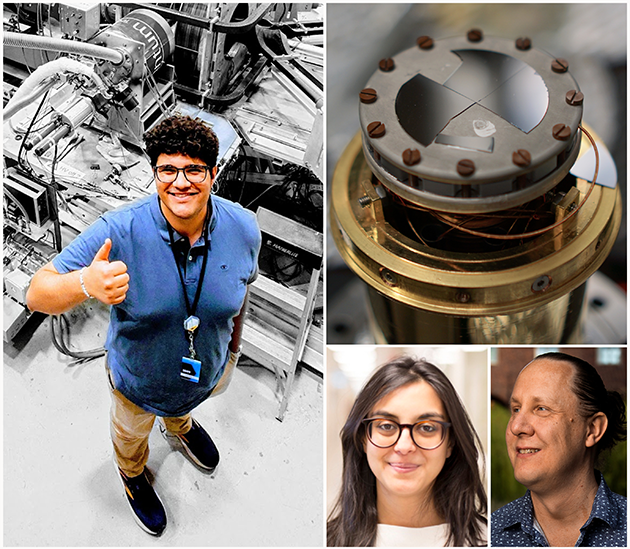Research internships inspire future KTH studies

Two upper-secondary students recently joined KTH for a short research internships through the national talent programme Rays for Excellence. One of them, Dani Zuhair from Lund, went on to win first prize in the prestigious Unga Forskare competition with his project, conducted at KTH.
Talented students meet researchers
The exchange was coordinated by Associate Professors Martin Månsson and Yasmine Sassa at the Division of Applied Physics. Through the Rays programme, highly motivated students from all over Sweden are selected to take part in a two-week summer research experience at KTH, Stockholm University or Karolinska Institute. The goal is to introduce research early and create new connections between academia and society.
“The students we hosted were incredibly dedicated. They approached the research tasks like junior PhD students. For us, it’s both rewarding and energising to supervise such curious minds,” says Yasmine Sassa.
After a short introduction period, the students Jakob Hüttner and Dani Zuhair each carried out a research project. Both projects reached the finals of the national competition Unga Forskare. Dani Zuhair’s project, which focused on magnetism in advanced materials, was awarded the top prize.
From school project to international research
Dani continued his research journey by joining KTH’s muon experiments at TRIUMF in Canada and the Paul Scherrer Institute (PSI) in Switzerland. With his secondary education now completed, he is returning to KTH for a gap year to work further on research before applying to university. Jakob intends to apply to KTH, inspired by the experience.
Long-term value for KTH
Collaborations like these have positive long-term effects for KTH. Not only do they promote science to a wider audience, but they also help attract new talent to our research environments.
“KTH has been involved in Rays for several years now. It’s a way for us to connect with young people across Sweden and showcase what research at KTH really looks like. We’ve seen that these early interactions often lead to future applications,” says Martin Månsson.
The programme also benefits researchers, who get the chance to supervise ambitious students and gain new perspectives. “It’s not something we do because we must. We do it because it’s fun – and because it works,” Månsson adds.
